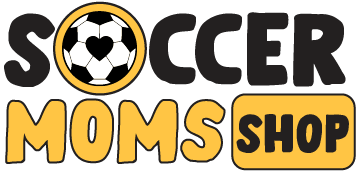As a former high school strength and conditioning coach, I’ve noticed that athletic development opportunities for kids have faded in recent years.
On one hand, many schools are reducing or eliminating physical education as budgets shrink and class time becomes a greater priority. I’ve also seen an increase in parents who believe their child should train like an adult, as well as coaches who openly promote sport specialization at an early age. It’s too bad, as these factors do a disservice to the kids. It’s time that we once again prioritize building general athleticism in our children and create healthy, active young people. With that in mind, here are five productive strategies parents can employ to develop their child’s athleticism.
- Encourage Them to Play
When kids go home, they don’t play as often as in past decades. Video games, social media and the latest smart phone apps tend to keep them indoors and sedentary. Consequently, childhood obesity rates have more than doubled in the last 30 years and our kids are more out of shape than ever. Not only does play time allow kids to expend energy, but it affords them an opportunity to create, problem solve and think for themselves.
As a kid, time free of adult supervision was gold. We biked, played pick-up games or created games in the yard. Most importantly, we had a blast doing it! Even simple games like tag or wall ball can go a long way toward building a child’s athleticism.
Parents need to take it upon themselves to power down their child’s devices and encourage them to play outside more frequently. Once your child is outside, stay hands off and let them explore and move with whatever activities they wish (as long as they’re reasonable and safe, of course).
- Keep Organized Sports Fun
I cannot stress enough the importance of the “fun factor.” Sports afford kids the opportunity to move in different planes and directions and to compete and build confidence. All of these factors are excellent for building better athletes. Although kids certainly benefit from the structure of organized activity, they also need to experience the “play” aspect of playing sports.
Overzealous adults (both parents and coaches) can and will zap the fun right out of youth sports. There will be plenty of time to “grind” later on. Let’s avoid the temptation to treat our 10-year-old as if they’re a pro athlete. Such behavior can lead to both physical and mental burnout, leaving kids to walk away from sports long before they have the chance to realize their true potential.
- Allow (and Encourage) Them to Play Multiple Sports
While it’s great to see kids up and active, the pressure to play a single sport at an early age is disheartening. This pressure is often applied by coaches of “pay for play” teams or organizations who have a vested interest in ensuring your hard-earned dollars are spent with them.
Parents and kids alike may also be fooled into believing that early specialization is the best path to a college scholarship, though recent research has found this to be false. None of these coaches ever reveal that just 2% of all high school athletes receive a college scholarship, and only 6% ever play in college at all. These coaches also won’t tell parents that kids who play multiple sports during their upbringing go on to boast improved athleticism, reduced injury rates and less burnout rates than those who specialize early.
My advice is simple: Allow your kids to try whatever they like. As they grow older, they’ll drop the activities they’re less passionate about and stick with the ones they enjoy most.
- Allow Them to Fail
As a good coaching buddy of mine says, “nobody bats 1.000.” Sports help kids develop confidence and character as they mature because they learn how to deal with both success and failure. Sports are about challenges. Sometimes, those challenges will get the better of them. That’s life, and failure in sports teaches our kids so many crucial life lessons. Sadly, I’ve seen kids who prefer the post-game bus ride home to a car ride with their parent simply because it allows them to avoid an overbearing lecture from said parent about all the things the child did wrong. The best thing you can do as a parent is encourage your child to persevere through those failures and get back on the saddle. The worst thing you can do is make them feel worse and turn something that should be fun into feeling like a life-or-death situation.
Failure is an opportunity to learn and grow, and your children shouldn’t be afraid of it. Encourage them to stay positive and give great effort rather than getting caught up in outcomes at this early age.
- Find an Outlet for Strength Training
This could be an article unto itself, but strength training, when performed smartly and correctly (fun, safe, age appropriate) is perfectly fine for kids. It affords kids an opportunity to enhance their athleticism, improve motor learning and work out any imbalances they may develop. The key is to expand your thinking of strength training to include more than just a heavy barbell. Bodyweight exercises and movements can help young athletes develop good motor patterns and set them up for enhanced performance as they move into adolescence and beyond. The key is finding a certified coach who has extensive experience with the age group your child falls into and who prioritizes safety and long-term development over instant results.
Source: https://www.stack.com
If you like this article, Follow us on FACEBOOK and INSTAGRAM and PINTEREST!

